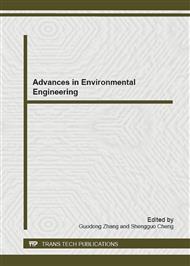[1]
Wang Dong, Cheng Yu, Gao Qi, in: Oil spill during ice age and oil spill response system in Bohai sea, edited by China Water Transport, volume 5(2011), pp.22-23.
Google Scholar
[2]
Liao ming-sheng, in: Fluid power calculation of roll reduction fin design, edited by Mechanical and Electrical Equipment, volume 3(1996), pp.15-20.
Google Scholar
[3]
Liu hong, in: Discussing in Shipping oil spill risk assessment methods, edited by China Maritime(2010), pp.44-57.
Google Scholar
[4]
Shi xin, in: Shipping oil spill pollution administration, edited by Navigation of China, volume 2(2006), pp.86-90.
Google Scholar
[5]
Wang Xia, in: Research on ship compensation range for pollution damage, edited by Dalian Maritime University (2008).
Google Scholar
[6]
Yang Tian-zi, Yu Gui-feng, in: The oil spill at sea ecological environment damage assessment and prospect, edited by Guangzhou Environmental Sciences, volume 23,issue3 (2008), pp.36-39.
Google Scholar
[7]
Zhu Ming-he, Ding Yong-sheng, Yin Pei-hai, et al, in: The application of BP neural network in compensation for damage assessment of the ship pollution accident, edited by Navigation technology, volume 1(2005), pp.65-69.
Google Scholar
[8]
HY/T 095-2007, The sea with ecological damage assessment technical guideline for oil[s].
Google Scholar
[9]
Yu Gui-feng, in: Shipping oil spill damage assessment of the Marine ecosystem, edited by Dalian Maritime University (2007).
Google Scholar
[10]
Xiong De-qi, Yin Pei-hai, Yan Shi-qiang, in: Marine oil spill damage compensation evaluation system of computerization, edited by Journal of Dalian Maritime University, volume26, issue1 (2000), pp.37-41.
Google Scholar
[11]
Li Ya-nan, Zhang Yan, Ma Cheng-dong, in: Economic loss evaluation model of the Marine disaster, edited by marine environmental science, volume 19, issue3 (2000), pp.60-63.
Google Scholar
[12]
Chen Gang, in: The damage assessment of oil spill pollution on the fishery resources, edited by Dalian Maritime University (2002).
Google Scholar
[13]
MASON I, in: Civil liability for oil pollution damage: Examining the evolving scope for environmental compensation in the internal regime, edited by Marine Policy, volume 27, issue1(2003), pp.1-12.
DOI: 10.1016/s0308-597x(02)00051-9
Google Scholar
[14]
FRENCH D, MCCAY J J, ROWE N W, et al, in: Estimation of potential impacts and natural resource damages of oil, edited by Journal of Hazardous Materiats (2004), pp.11-25.
DOI: 10.1016/j.jhazmat.2003.11.013
Google Scholar
[15]
OFIARA D D, in: Natural resource damage assessments in the United States rules and procedures for compensation from spills of Hazardous Substances and oil in waterways under US jurisdiction, edited by Marine Pollution Bulletin, volume 44(2002), P.96-110.
DOI: 10.1016/s0025-326x(01)00263-6
Google Scholar
[16]
RICHARD W D, THOMAS C G, WILLIAM H D, in: The use of habitat equivalency analysis in natural resource, edited by Ecological Economics, volume 48(2004), pp.49-70.
Google Scholar
[17]
Smith, R.A., Slack, J.R., Wyant, T., et al, in: The oil spill risk analysis model of the US Geological Survey, edited by Geological Survey Professional Paper, 1227, US Geological Survey, Reston, VA, USA(1982), p.36.
DOI: 10.3133/pp1227
Google Scholar
[18]
James M. Price, Walter R. Johnson, Charles F. Marshall, et al, in: Overview of the Oil Spill Risk Analysis (OSRA) Model for Environmental Impact Assessment, edited by Spill Science & Technology Bulletin, volume 8(2003), pp.529-533.
DOI: 10.1016/s1353-2561(03)00003-3
Google Scholar
[19]
Gundlach E.R. Hayes,M.O, in: Vulnerability of coastal environments to oil spill impacts, edited by Marine Technology Society Journal, volume 12(1978), pp.18-27.
Google Scholar
[20]
Petersen,J., Michel,J., Zengel,S., et al, in: Environmental Sensitivity Index Guidelines. Version 3.0.NOAA Technical Memorandum NOS OR & R11.Seatle: Office of Response and Restoration, edited by National Oceanic and Atmospheric Administration (2002).
Google Scholar
[21]
Hanna R.G.M, in: An approach to evaluate the application of the vulnerability index for oil spills in tropical red sea environments, edited by Spill Science and Technology Bulletin, volume2 (1995), pp.171-186.
DOI: 10.1016/s1353-2561(96)00016-3
Google Scholar
[22]
Nansingh,P., Jurawan,S., in: Environmental sensitivity of a tropical coastline(Trinidad, West Indies)to oil spills, edited by Spill Science & Technology Bulletin, volume 5, issue2 (1999), pp.161-172.
DOI: 10.1016/s1353-2561(98)00052-8
Google Scholar
[23]
Adler,E.,Inbar,M., in: Shoreline sensitivity to oil spills,the Mediterranean coast of Israel: assessment and analysis, edited by Ocean & Coastal Management, volume 50(2007), pp.24-34.
DOI: 10.1016/j.ocecoaman.2006.08.016
Google Scholar
[24]
Wieczorek,A., Dias-Brito,D., Carvalho Milanelli J.C., in: Mapping oil spill environmental sensitivity in Cardoso Island Park and surroundings areas, Sao Paulo, Brazil, edited by Ocean & Coastal Management, volume50 (2007), pp.872-886.
DOI: 10.1016/j.ocecoaman.2007.04.007
Google Scholar
[25]
S.Castanedo, J.A. Juanes,R.medina,A., in: Puente et al. Oil spill vulnerability assessment integrating physical, biological and socio-economical aspects: Application to the Cantabrian coast(Bay of Biscay, Spain), edited by Journal of Environmental Management, volume91 (2009), pp.149-159.
DOI: 10.1016/j.jenvman.2009.07.013
Google Scholar
[26]
UNCTAD Maritime security: Elements of an analytical framework for compliance measurement and risk assessment (2006).
Google Scholar
[27]
GAO 'PORT RISK MANAGEMENT: Further Refinements Needed to Assess Risks and Prioritize Protective Measures at Ports and Other Critical Infrastructure'. Report to Congressional Committees. US Government Accountability Office(2006).
Google Scholar
[28]
DETR, UK. Port Marine Safety Code, March 2000, ISBN: 185112 3652.
Google Scholar
[29]
Kambiz Mokhtari, Jun Ren, Charles Roberts, et al, in: Decision support framework for risk management on sea ports and terminals using fuzzy set theory and evidential reasoning approach, edited by Expert Systems with Applications, volume39 (2012), pp.5087-5103.
DOI: 10.1016/j.eswa.2011.11.030
Google Scholar
[30]
Yang Sheng-shi, in: Present situation of shipping oil spill response capacity and construction planning research in water in China, edited by China Maritime, volume 3(2009), pp.37-41.
Google Scholar


